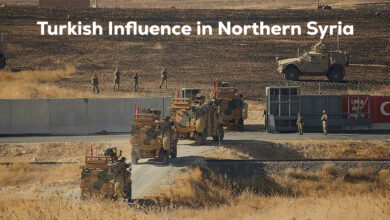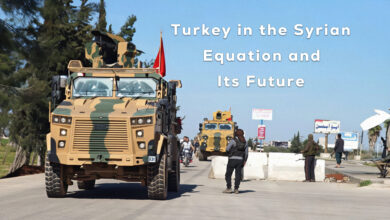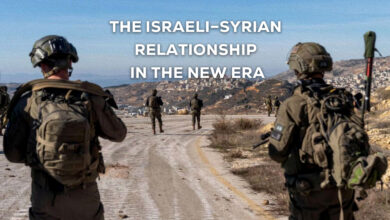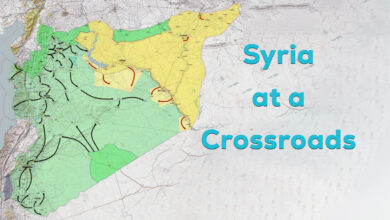
In the modern era, what could have been a major turning point in history appeared in all its respects, whose effects are, even after its geographical demise, still continuing with the same danger and fears staring from every direction. It is ISIS, whose massacres and the brutality of individual and mass killings can be classified among the most heinous massacres in modern history. One of those massacres, al-Shaitat that took place in August, 2014, where it targeted an entire clan in Deir ez-Zor countryside, eastern Syria. Its first spark erupted when Moroccan ISIS terrorists killed a young man in his house in the town of Abu Hamam and then assassinating his neighbor in the al-Qahawi market. Following the incidents, members of al-Shaitat clan rose up in the face of ISIS, burned its headquarters and expelled its terrorists from the area. ISIS response was brutal, as it brought in its most terrorist and barbaric battalion, the so-called Moroccan “al-Battar” battalion, which randomly bombarded the town. The battles continued in a bloody manner for three weeks. The resistance of al-Shaitat members was great, which forced ISIS to bring in tens of thousands of terrorists from Iraq the matter forced the al-Shaitat members to withdraw towards the eastern Qalamoun. Only civilians were left, who were later assassinated by ISIS terrorists. ISIS pursued all members of the clan and killed them. The number of those killed reached 70 in the city of al-Mayadin, 150 in the town of Hajin, and 170 in the two towns of ak-Ashara and al-Omar oil field. Also, 500 people were arrested, 300 of them were executed. According to the Syrian Observatory for Human Rights (SOHR) more than 700 people were executed and 5.000 were displaced. The fate of hundreds is still unknown.
Their money and their displacement, the terrorist organization pursued everyone who belonged to the clan, so that killing became identity! Where 70 members of the clan were executed in al-Mayadin, 150 in Hajin, 170 in the town of al-Ashara and in al-Omar, and 500 people were arrested, including 300 people.
ISIS used to use intimidation and field executions to subject any area to its control. Their terrorist acts against the peoples of the region were horrific. It committed several massacres. Before the massacre of the al-Shaitat clan, ISIS committed something more heinous, where on August 3, 2014, it committed the most heinous massacre in the modern history against the Yezidis of Shengal (Sinjar). This massacre amounted to ethnic cleansing and genocide, as it affected Yezidi men and their elders, without excluding children or women. 83 mass graves of the Yezidis have been discovered so far, noting that there are graves that have not yet been discovered, which claimed the lives of about 5.000 Yezidis.
To eliminate the ISIS terrorism and liberate the region from its oppression, the Syrian Democratic Forces (SDF) sacrificed with thousands of martyrs. The SDF assume the responsibility of confronting this terrorism. The SDF is still fighting and pursuing ISIS sleeper cells and its lone wolves without any appreciation from the international powers, which remain silent regarding the Turkish drone strikes against those who confronted ISIS. The Turkish drone attacks can be considered as a revenge of ISIS elimination by the SDF. These attacks, whether by drones or indiscriminate bombing, do not differentiate between civilian and military. Among the victims of the Turkish attacks on northern Syria are children, women and the elderly, in addition to the destruction of houses and the displacement of families.
The relative stability and security that the SDF achieved with the blood of its martyrs is now violated by Turkey through a political, military and economic war, which prolongs the life of the Syrian crisis, in addition to the most important aspect, which is providing an outlet for ISIS sleeper cells to revive themselves and strike the region and the world at any moment. These threats undermine the efforts to combat ISIS terrorism and loosen the security grip on its members, who are waiting for destabilize and attack, to revive their fading organization.
The Turkish threats could be the door that opens wide for the return of ISIS, as the most stakeholders in destabilizing northern Syria is ISIS that seeks to implement its plans to return again. Any military operation, or even the continuation of bombing and threats, gives ISIS sleeper cells the ability to move freely and expand their geographic area. The SDF continues its security campaigns to control stability and undermine ISIS’s ability to carry out any terrorist operations inside or outside Syria. It is worth noting that the attack on Gweiran prison in Hasakah city portends a great danger to the capabilities of the active ISIS cells, and the scheme that was devised to control the city and expand quickly. The border is in the north, and it must also be taken into account that the Hawl Camp is a time bomb and can explode at any minute. This indicates the movement of ISIS cells inside the camp, the assassination operations that take place from time to time, and their digging of tunnels. All of this indicates the existence of a nucleus of ISIS inside the camp. Accordingly, the international community must stop going along with Turkey at the expense of global peace and security, and the risk of repeating other massacres such as the massacre of the al-Shaitat clan or ethnic cleansing like the one that happened with the Yezidis in Shengal. Any attack by Turkey is a green signal for ISIS to come back and implement new terrorist plots, and this can be inferred from the great escalation of ISIS in keeping with the escalation of the Turkish language with its threats and the bombing of drones and artillery along the border strip. It can also be noted that ISIS cells are carrying out assassinations of targeted tribal figures. The tribesmen adhere to the policy of the Autonomous Administration and create a rift in the organizational strength of the security and military forces. This primarily serves the agenda of the Turkish state. It is also clear through this escalating that there is cooperation between these cells and the Turkish intelligence.
The rapid changes in the Syrian crisis and the fluctuations in attitudes keep the door open to all possibilities, all of which revolve around the possibility of the return of ISIS, and when it does return, it may receive support from regional countries wishing to dominate the region, and its cells seem to receive, in a coordinated manner, directions and equipment from the parties stalking the Autonomous Administration.
Although the SDF have protected the communities of the region and even the world from the massacres of ISIS, they have not received from the international community what is expected of it, by denouncing the targets and threats that avenge the defeat of ISIS only.




